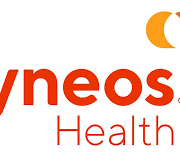Optimizing clinical trials with orchestrated IRT eCOA
Optimizing clinical trials with orchestrated IRT eCOA
By Helen Greta
Over the past decade, mobile devices, sensors, and wearables have become more common in clinical trials, improving patient-centricity and accessibility. However, despite improving patient recruitment, retention, and satisfaction in research, these innovations have also imposed an increased burden on on-site staff – as well as patients. For sponsors, site staff, and patients, it is critical to offset these challenges with tools that streamline and simplify clinical research. Orchestrating various technological tools into an integrated platform could alleviate the problem.
The stress of sponsor contracts, a high daily workload, and regular staff turnover constantly burden researchers. Managing patient retention is stressful and time-consuming, and reconciling data across multiple systems is difficult due to the use of multiple technology tools. By integrating technology and unifying solution delivery and management, teams can orchestrate and optimize clinical trials. Specifically, an orchestrated Integrated Response Technology (IRT) and electronic Clinical Outcome Assessments (eCOA) solution has proven to improve study quality, reduce site and sponsor effort, and accelerate decision-making.
Goals and benefits of IRT eCOA orchestration
From trial planning to trial close-out, sponsors can simplify the entire trial process with an orchestrated solution combining IRT and eCOA systems. Through the elimination of redundant, manual tasks, the technology decreases the administrative burden on research staff. This tool allows researchers to streamline their workflow, reducing the overall trial timeline. Ultimately sponsors, patients, and other stakeholders, such as staff, can all reap the benefits from an orchestrated IRT eCOA solution. Key benefits of IRT eCOA orchestration are:
- Streamlined sponsor processes: Sponsors benefit from improved communications with vendors, streamlined and integrated specification processes, unified user acceptance testing (UAT), using a configurable, validated platform that can be customized. A streamlined build process leads to accelerated platform delivery timelines and operational efficiencies that save time and money.
- Improved patient outcomes: Trial participants also benefit from an orchestrated IRT eCOA platform, resulting in better patient outcomes. Patients and caregivers can respond to assessments, report symptoms, and input results directly. Consequently, data is of higher quality, and insights can be quickly accessed. Combined solutions also improve the workflow of site personnel, allowing them to spend more time with patients and less time dealing with administration. This results in deeper, more qualitative insights into their trial experiences.
- Reduced staff burnout: Burnout risks can be mitigated by eliminating some of the challenges research staff face, and an orchestrated system offers several ways to do so. Data, dashboards, and reports can be accessed in one place and often with a single login based on user role. No matter where the eCOA is set up, patients enjoy the same ease of use. By orchestrating eCOA scores, researchers can move studies along quickly and accurately during study start-up screening, titration, and other IRT processes. For example, during patient enrollment, once patients are enrolled in IRT, patient data is pushed to eCOA completing the patient enrollment process in eCOA. This eliminates the need for enrolling the patient in multiple solutions, while also eliminating the need the need for site staff to reconcile data between solutions. The streamlining of data flows through intelligent integrations not only reduces burden, but provides for more immediate, detailed reporting.
Furthermore, IRT can allow users to manage eCOA devices more accurately and efficiently by eliminating the need for a separate device management system. By leveraging IRT’s full chain of custody functionality, IRT manages device provisioning through its advanced study medication and inventory system. Through integrated training, 24-hour troubleshooting, and simplified study guides, trained staff can reduce effort and increase productivity. In turn, these advantages improve staff morale and lead to better outcomes.
Reduce site and sponsor burden and improve the patient journey for the future
The complexity of clinical studies is increasing and will continue to be more data-driven. Industry partners will continue to ask technology vendors for improvements in the useful application of data, user burden reduction, as well as enhanced build and change management processes for integrated technology platforms. By orchestrating an IRT eCOA solution based on real-time data, many cumbersome aspects of clinical trials can be simplified. The results help support sponsors with superior results in shorter timeframes and greater cost-effectiveness. As a result, site staff doesn’t have to worry about patients’ participation, and patients can take control of their own participation.
 |
Helen Greta is director, project management at Cenduit IRT, an IQVIA business, and director, project management – IRT/eCOA customer success lead Cenduit, RDS Technologies. |










